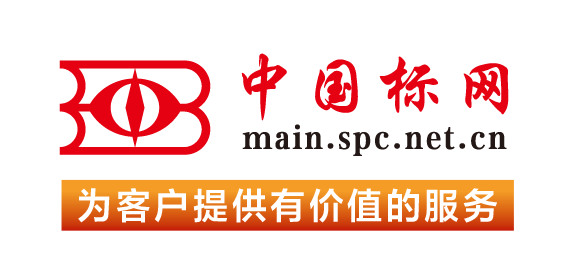【国外标准】 Standard Practice for Blood Irradiation Dosimetry
本网站 发布时间:
2024-02-28
开通会员免费在线看70000余条国内标准,赠送文本下载次数,单本最低仅合13.3元!还可享标准出版进度查询、定制跟踪推送、标准查新等超多特权!
查看详情>>
适用范围:
4.1 Blood and blood components are irradiated to predetermined absorbed doses to inactivate viable lymphocytes to help prevent transfusion-induced graft-versus-host disease (GVHD) in certain immunocompromised patients and those receiving related-donor products (1, 2).94.2 The assurance that blood and blood components have been properly irradiated is of crucial importance for patient health. This shall be demonstrated by means of accurate absorbed-dose measurements on the product, or in simulated product.4.3 Blood and blood components are usually irradiated using gamma radiation from 137Cs or 60Co sources, or X-radiation from X-ray units.4.4 Blood irradiation specifications include a lower limit of absorbed dose, and may include an upper limit or central target dose. For a given application, any of these values may be prescribed by regulations that have been established on the basis of available scientific data (see 2.6).4.5 For each blood irradiator, an absorbed-dose rate at a reference position within the canister is measured as part of irradiator acceptance testing using a reference-standard dosimetry system. That reference-standard measurement is used to establish operating parameters so as to deliver specified dose to blood and blood components.4.6 Absorbed-dose measurements are performed within the blood or blood-equivalent volume for determining the absorbed-dose distribution. Such measurements are often performed using simulated product (for example, polystyrene is considered blood equivalent for 137Cs photon energies).4.7 Dosimetry is part of a measurement management system that is applied to ensure that the radiation process meets predetermined specifications (see ISO/ASTM Practice 52628).4.8 Blood and blood components are usually irradiated in chilled or frozen condition. Care should be taken, therefore, to ensure that the dosimeters and radiation-sensitive indicators can be used under such temperature conditions.4.9 Proper documentation and record keeping are critical components of a radiation process. Documentation and record keeping requirements may be specified by regulatory authorities or may be given in the corporation’s quality policy.4.10 Response of most dosimeters has significant energy dependence at photon energies of less than 100 keV, so proper care must be exercised when measuring absorbed dose in that energy range.1.1 This practice outlines the irradiator installation qualification program and the dosimetric procedures to be followed during operational qualification and performance qualification of the irradiator. Procedures for the routine radiation processing of blood product (blood and blood components) are also given. If followed, these procedures will help ensure that blood product exposed to gamma radiation or X-radiation (bremsstrahlung) will receive absorbed doses with a specified range.1.2 This practice covers dosimetry for the irradiation of blood product for self-contained irradiators (free-standing irradiators) utilizing radionuclides such as 137Cs and 60Co, or X-radiation (bremsstrahlung). The absorbed dose range for blood irradiation is typically 15 Gy to 50 Gy.1.3 The photon energy range of X-radiation used for blood irradiation is typically from 40 keV to 300 keV.1.4 This practice also covers the use of radiation-sensitive indicators for the visual and qualitative indication that the product has been irradiated (see ISO/ASTM Guide 51539).1.5 This document is one of a set of standards that provides recommendations for properly implementing dosimetry in radiation processing and describes a means of achieving compliance with the requirements of ISO/ASTM Practice 52628 for dosimetry performed for blood irradiation. It is intended to be read in conjunction with ISO/ASTM Practice 52628.1.6 This standard does not purport to address all of the safety concerns, if any, associated with its use. It is the responsibility of the user of this standard to establish appropriate safety, health, and environmental practices and determine the applicability of regulatory limitations prior to use.1.7 This international standard was developed in accordance with internationally recognized principles on standardization established in the Decision on Principles for the Development of International Standards, Guides and Recommendations issued by the World Trade Organization Technical Barriers to Trade (TBT) Committee.
标准号:
ASTM ISO/ASTM51939-17(2022)
标准名称:
Standard Practice for Blood Irradiation Dosimetry
英文名称:
Standard Practice for Blood Irradiation Dosimetry标准状态:
Active-
发布日期:
-
实施日期:
出版语种:
- 推荐标准
- ASTM 51401-21 Standard Practice for Use of a Dichromate Dosimetry System
- ASTM 51956-21 Standard Practice for Use of a Thermoluminescence-Dosimetry System (TLD System) for Radiation Processing
- ASTM A1010/A1010M-24 Standard Specification for Higher-Strength Martensitic Stainless Steel Plate, Sheet, and Strip
- ASTM A1016/A1016M-24 Standard Specification for General Requirements for Ferritic Alloy Steel, Austenitic Alloy Steel, and Stainless Steel Tubes
- ASTM A105/A105M-24 Standard Specification for Carbon Steel Forgings for Piping Applications
- ASTM A1064/A1064M-24 Standard Specification for Carbon-Steel Wire and Welded Wire Reinforcement, Plain and Deformed, for Concrete
- ASTM A108-24 Standard Specification for Steel Bar, Carbon and Alloy, Cold-Finished
- ASTM A1080/A1080M-24 Standard Practice for Hot Isostatic Pressing of Steel, Stainless Steel, and Related Alloy Castings
- ASTM A1090/A1090M-19(2024) Standard Specification for Forged Rings and Hollows for Use as Base Plates in Power Transmission Structures
- ASTM A1115/A1115M-24 Standard Practice for Construction of Mechanically Stabilized Earth Walls with Inextensible Soil Reinforcement
- ASTM A1128-24 Standard Specification for Stainless Steel Shielded, Rubber Gasketed Couplings Having an Integral Restraint Feature for Joining Hubless Cast Iron Soil Pipes and Fittings Where External Restraint Is Required
- ASTM A179/A179M-24 Standard Specification for Seamless Cold-Drawn Low-Carbon Steel Heat-Exchanger and Condenser Tubes
- ASTM A234/A234M-24 Standard Specification for Piping Fittings of Wrought Carbon Steel and Alloy Steel for Moderate and High Temperature Service
- ASTM A242/A242M-24 Standard Specification for High-Strength Low-Alloy Structural Steel
- ASTM A249/A249M-24a Standard Specification for Welded Austenitic Steel Boiler, Superheater, Heat-Exchanger, and Condenser Tubes
 我的标准
我的标准 购物车
购物车 400-168-0010
400-168-0010














